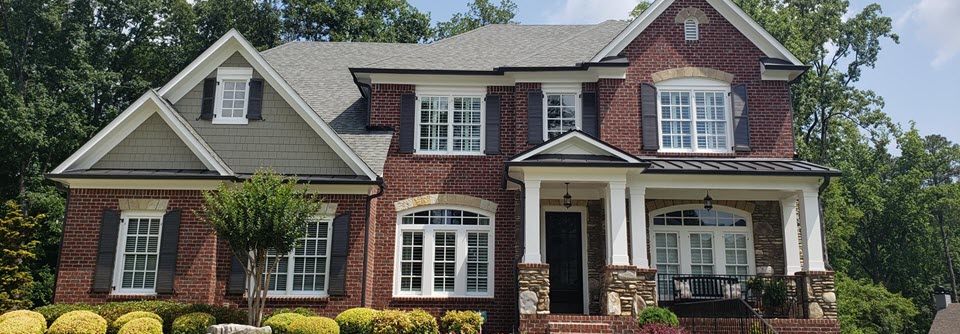
The Many Scenarios of Painting Brick
Posted on October 25, 2023
Aside from significantly enhancing your home’s curb appeal by giving it a fresh, modern look, repainting your home’s brick exterior is also a cost-effective way to protect the brick from weather damage and extend its lifespan.
When it comes to painting brick, there are many scenarios, which we will touch on below. The project prep phase will be similar for all scenarios. Unpainted brick has a porous surface and thus cleaning and prep is a little different from other surfaces. We will start by pressure washing and allowing time to dry. The surface must be free of dirt and mildew. Frequently, there is discoloration in the brick which cannot be eliminated, but it is fine to paint over. Items such as downspouts and shutters must be removed. Any failing caulk around windows, doors, and vents will be replaced.
Painting Brick in Three Different Scenarios
Type 1: Unpainted brick being painted a solid color
The most important step for a long-lasting finish is to use a proper masonry primer for the first coat. There are chemicals in brick that will leach through and discolor regular house paint, even through “paint & primer in one” paints. Failure to use a masonry paint or primer is a recipe for future problems. The application should be sprayed and a back-roll or brush to make sure the primer is worked into the openings in the brick. A proper prime coat will involve using a lot of product, due to brick’s porous nature. After the primer has dried any premium acrylic house paint can be used for a top coat. Backrolling the top coat may or may not be necessary depending on the brick texture.
 Type 2: Repainting previously painted brick
Type 2: Repainting previously painted brick
Any loose or peeling paint must be scraped away. Those areas should be spot-primed. Assuming the existing paint is in generally good condition any premium acrylic house paint can be used for a top coat. Widespread flaking and loose paint indicate the brick was not properly primed prior to painting. Unfortunately, this indicates all existing paint will have to be removed prior to painting as if it was unpainted brick.
Type 3: “Whitewash” or “Limewash”
These are two different products that customers frequently refer to interchangeably and can end up with similar appearance. Limewash is a mineral suspended in a solvent that is applied in a manner that lets much of the original brick color show through. Whitewash is using diluted masonry paint and applying a technique that again allows the underlying color to show through. With either product, you can create patterns by wiping off some of the product before it dries. It is important that you have pictures of the effect you want so that we can work to produce that effect.
Ready to make a change? Schedule your FREE painting estimate with us today!
More posts from our ‘CAN YOU PAINT’ series:





